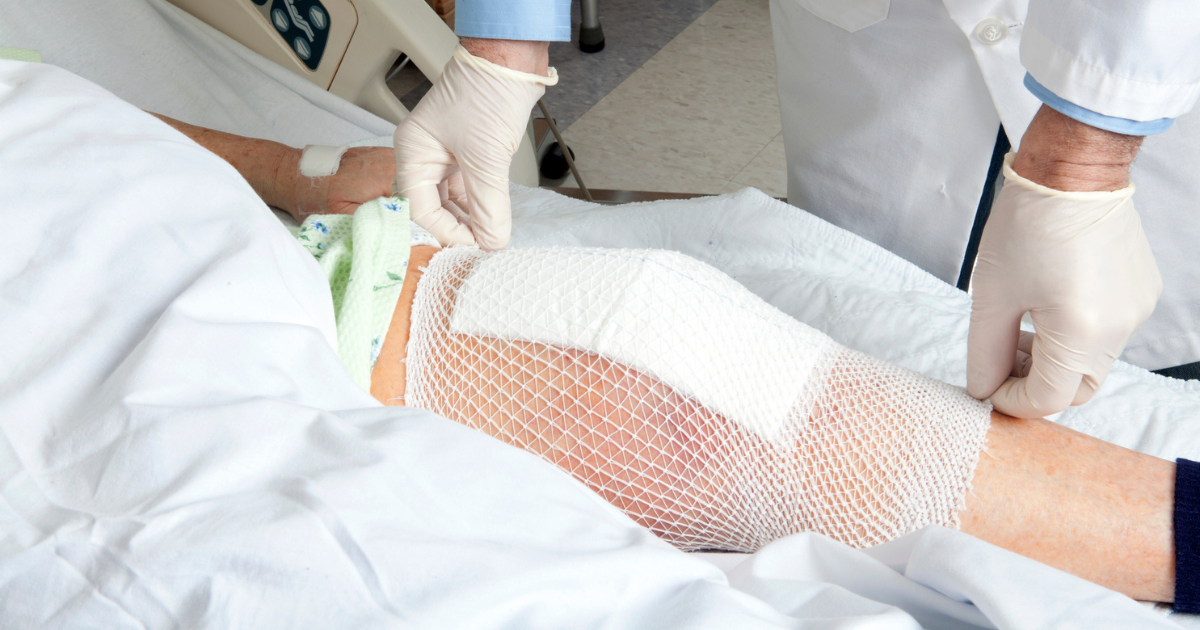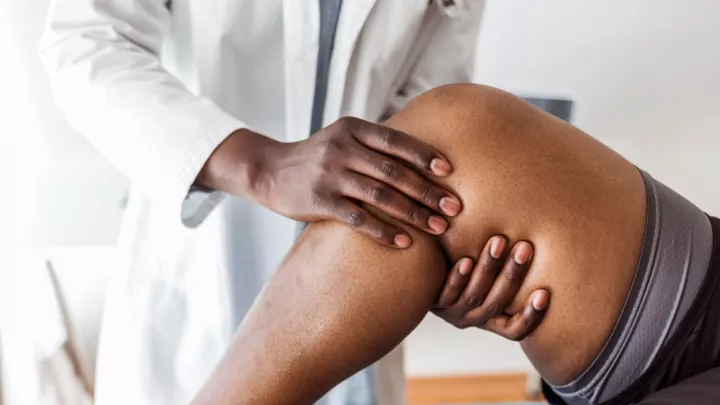Recovery tips after knee replacement

The most common knee surgery for arthritis that is unable to be managed by lifestyle changes or medications is a partial or total joint replacement. These surgeries have been performed since the 1970s and have a long track record of excellent results.
How long is recovery after knee replacement surgery?
Recovery time after knee replacement surgery varies from person to person. Orthopaedic surgeon Christopher Deans, MD, explains that every patient will go through different phases of recovery. “The early recovery period is focused on healing the incision and getting through the immediate postoperative phase, which includes pain and inflammation,” says Dr. Deans. “This typically lasts from four to six weeks. It’s also when patients experience most of their pain and stiffness.”
Once patients have passed the four to six-week mark, they can work more aggressively on improving their range of motion and strengthening their muscles. This includes active and passive range of motion therapies, strengthening exercises concentrating on thigh muscles, quads and hamstrings. As their range of motion improves, patients can begin working on functional activities, such as climbing up and down stairs foot-over-foot, riding stationary bikes and walking longer distances.
“The final phase of recovery is when patients can start more strenuous activities without a cane or a walker,” says Dr. Deans. “They can begin resuming exercises they enjoyed before surgery such as weight-training, skiing, pickleball and sporting activities.”
Dr. Deans advises patients that their knees will continue to recover and improve for a year or more after surgery.
Treating postoperative pain
While total knee replacement surgery can be painful, advancements in how pain is managed both during and after surgery have made a difference. “On the day of surgery, anesthesia, pain blocks and preoperative medications can help improve postoperative pain,” says Dr. Deans.
Most patients use controlled pain medications for the first four weeks after surgery. Opioid alternatives, like iovera®, can also improve post-operative pain after knee replacement. By six weeks after surgery, most patients can stop controlled pain medications. Patients may continue Tylenol® or anti-inflammatories, like ibuprofen, for three months or longer.
What is the recovery process for knee replacement?
Sometimes, doctors prescribe formal physical therapy, or prehabilitation, before knee replacement surgery. However, all patients should continue moving the knees, flexing and extending them as much as possible before surgery. Active patients should continue doing their normal activities, such as walking the stairs, going to the gym, or doing any exercise they prefer. Moving your knee as much as you can before surgery will help with postoperative recovery.
“I’d say that at least half of knee replacement patients can go home on the day of surgery if they have good support at home,” says Dr. Deans. “The other 50% of patients will stay overnight. Most will leave the hospital by noon the next day. It depends on what’s safest and most supportive of early post-op recovery.”
Physical therapy starts in the hospital the day of or the morning after surgery. Patients going home on the same day of surgery, and those who discharge from the hospital after an overnight stay, will have physical therapy home visits within the first three days.
Overall, the use of inpatient rehab facilities for recovery from total knee replacements has decreased. However, if a patient is lower functioning before surgery or has limited support at home, they might benefit from inpatient rehabilitation services.
Advice for a safe recovery
Most patients use a cane or a walker for a couple of weeks after surgery to help maintain their balance. “The number one rule is to not fall after knee replacement surgery,” says Dr. Deans. “Also, if you are in a crowd or have kids running around, a cane or walker is a good reminder to those around you that you’re still recovering.”
When you’re resting, keeping the leg elevated with the back of the knee hanging free will help with knee extension. Many patients enjoy sleeping in a recliner for a few days after surgery. Elevating the upper body helps promote good oxygenation and better breathing.
What activities can I do after surgery?
Until the incision is entirely healed, which takes about six weeks, keep it clean and dry. After that, it’s safe to shower and let water run over your incision. If you have scabs or areas that aren't healed, you should avoid hot tubs and swimming (especially in lakes) to lower your risk of infection.
“Today’s implants are less likely to wear out, so we don’t restrict activities as much as we used to,” says Dr. Deans. “The purpose of doing a knee replacement is to get you back to doing the activities that fulfill your life. I don't have any restrictions on my patients once they pass that three-month timeframe.”
Patients who’ve only had surgery on their left knee can drive an automatic vehicle as soon as they’re off pain medication. If you’ve had surgery on the right knee, wait at least 28 days or until you can move your right foot from gas to break easily. Start with a test drive in a parking lot or empty side street first to see how your knee performs.
When you’re ready to resume an activity, test it out to see how your body responds. Remember that your knee will feel much better after a year than at three months. You can also consult your doctor if you’re concerned about resuming any activity.
“The key is having support people around to cheer you on because recovery can be tough,” says Dr. Deans. “Once you get to that three-month mark and back into functional activities that fulfill your life, things really start to take off, and people start liking their knees.”






